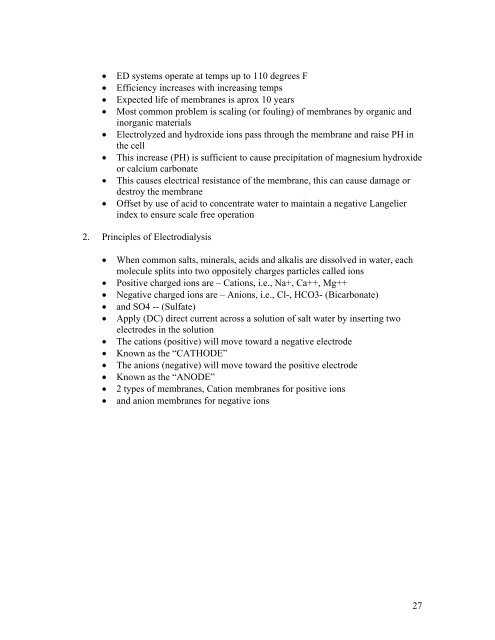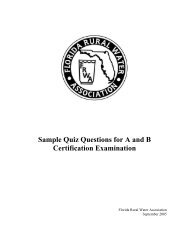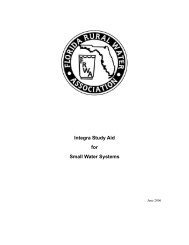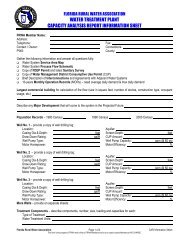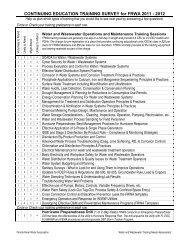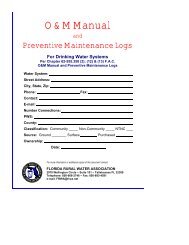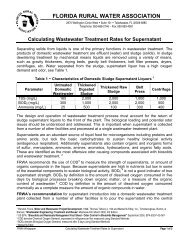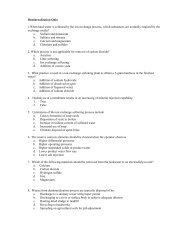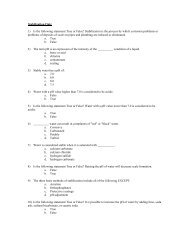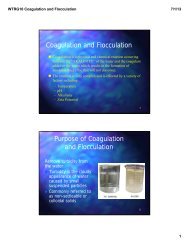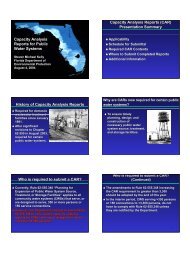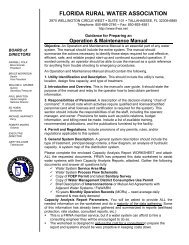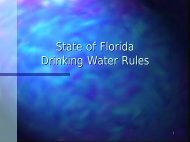The Taylor Tutorial - Florida Rural Water Association
The Taylor Tutorial - Florida Rural Water Association
The Taylor Tutorial - Florida Rural Water Association
You also want an ePaper? Increase the reach of your titles
YUMPU automatically turns print PDFs into web optimized ePapers that Google loves.
• ED systems operate at temps up to 110 degrees F• Efficiency increases with increasing temps• Expected life of membranes is aprox 10 years• Most common problem is scaling (or fouling) of membranes by organic andinorganic materials• Electrolyzed and hydroxide ions pass through the membrane and raise PH inthe cell• This increase (PH) is sufficient to cause precipitation of magnesium hydroxideor calcium carbonate• This causes electrical resistance of the membrane, this can cause damage ordestroy the membrane• Offset by use of acid to concentrate water to maintain a negative Langelierindex to ensure scale free operation2. Principles of Electrodialysis• When common salts, minerals, acids and alkalis are dissolved in water, eachmolecule splits into two oppositely charges particles called ions• Positive charged ions are – Cations, i.e., Na+, Ca++, Mg++• Negative charged ions are – Anions, i.e., Cl-, HCO3- (Bicarbonate)• and SO4 -- (Sulfate)• Apply (DC) direct current across a solution of salt water by inserting twoelectrodes in the solution• <strong>The</strong> cations (positive) will move toward a negative electrode• Known as the “CATHODE”• <strong>The</strong> anions (negative) will move toward the positive electrode• Known as the “ANODE”• 2 types of membranes, Cation membranes for positive ions• and anion membranes for negative ions27


